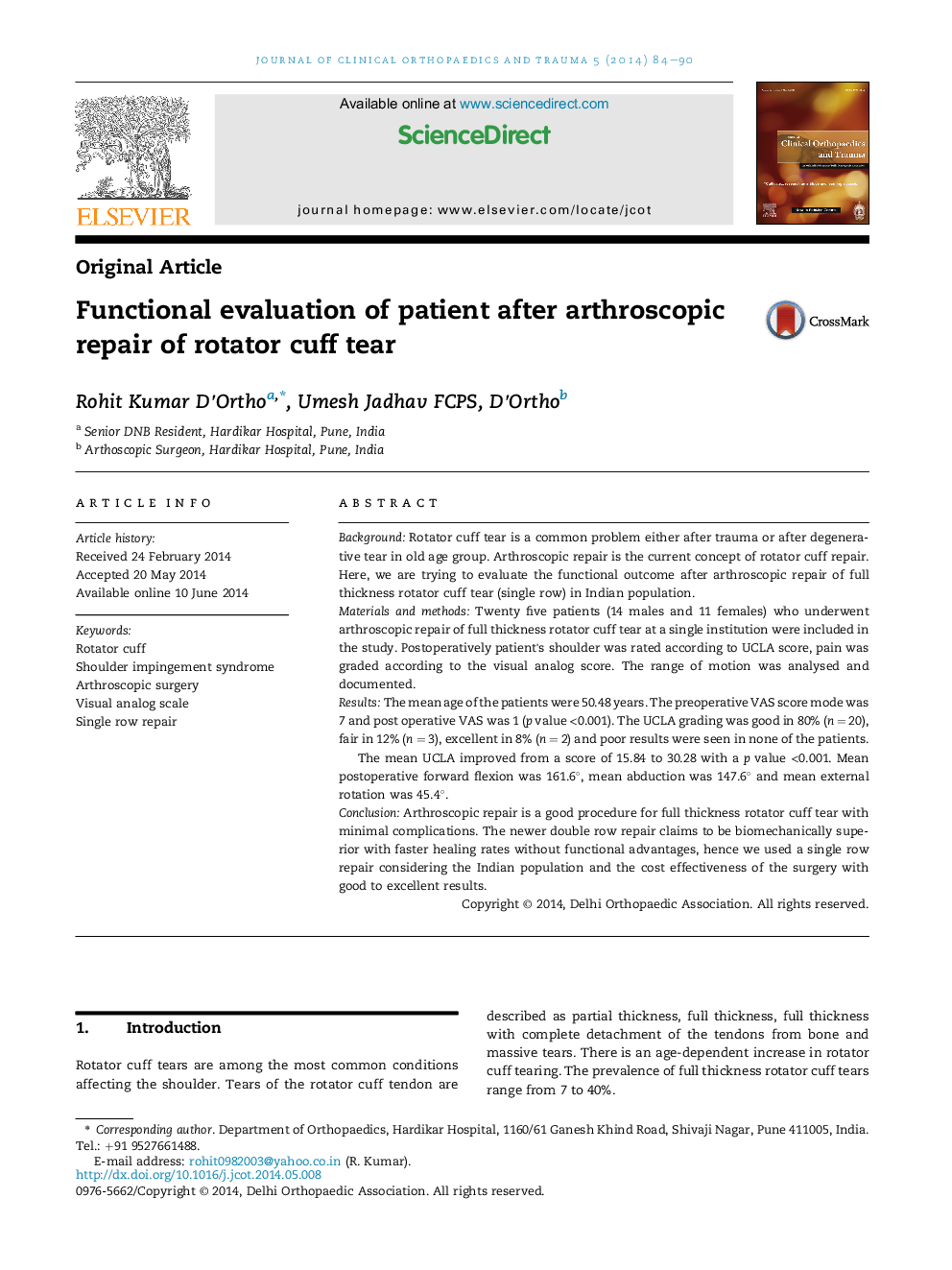| Article ID | Journal | Published Year | Pages | File Type |
|---|---|---|---|---|
| 3245398 | Journal of Clinical Orthopaedics and Trauma | 2014 | 7 Pages |
BackgroundRotator cuff tear is a common problem either after trauma or after degenerative tear in old age group. Arthroscopic repair is the current concept of rotator cuff repair. Here, we are trying to evaluate the functional outcome after arthroscopic repair of full thickness rotator cuff tear (single row) in Indian population.Materials and methodsTwenty five patients (14 males and 11 females) who underwent arthroscopic repair of full thickness rotator cuff tear at a single institution were included in the study. Postoperatively patient's shoulder was rated according to UCLA score, pain was graded according to the visual analog score. The range of motion was analysed and documented.ResultsThe mean age of the patients were 50.48 years. The preoperative VAS score mode was 7 and post operative VAS was 1 (p value <0.001). The UCLA grading was good in 80% (n = 20), fair in 12% (n = 3), excellent in 8% (n = 2) and poor results were seen in none of the patients.The mean UCLA improved from a score of 15.84 to 30.28 with a p value <0.001. Mean postoperative forward flexion was 161.6°, mean abduction was 147.6° and mean external rotation was 45.4°.ConclusionArthroscopic repair is a good procedure for full thickness rotator cuff tear with minimal complications. The newer double row repair claims to be biomechanically superior with faster healing rates without functional advantages, hence we used a single row repair considering the Indian population and the cost effectiveness of the surgery with good to excellent results.
